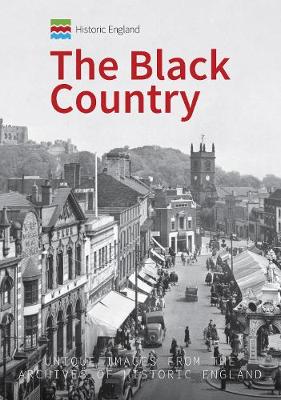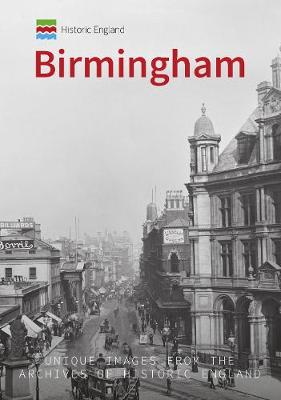Historic England
2 total works
This illustrated history portrays one of England’s most fascinating regions - the Black Country in the West Midlands. It provides a nostalgic look at the area’s past and highlights the special character of some of its most important historic sites.
The photographs are taken from the Historic England Archive, a unique collection of over 12 million photographs, drawings, plans and documents covering England’s archaeology, architecture, social and local history. Pictures date from the earliest days of photography to the present and cover subjects from Bronze Age burials and medieval churches to cinemas and seaside resorts.
The Black Country has long been an important region in England. The towns and villages west of Birmingham around Dudley, Wolverhampton, Sandwell and Walsall prospered from its rich mineral resources from medieval times, particularly through coal mining and ironworking. These towns were at the forefront of the Industrial Revolution in Britain and by the eighteenth century the area was continuously built up and the site of intensive industry and manufacturing. In the latter part of the twentieth century coal mining in the Black Country rapidly declined and heavy industry and manufacturing moved away. Though the landscape has changed rapidly due to the regeneration of the area in subsequent decades, the Black Country’s unique heritage has not been lost.
The photographs are taken from the Historic England Archive, a unique collection of over 12 million photographs, drawings, plans and documents covering England’s archaeology, architecture, social and local history. Pictures date from the earliest days of photography to the present and cover subjects from Bronze Age burials and medieval churches to cinemas and seaside resorts.
The Black Country has long been an important region in England. The towns and villages west of Birmingham around Dudley, Wolverhampton, Sandwell and Walsall prospered from its rich mineral resources from medieval times, particularly through coal mining and ironworking. These towns were at the forefront of the Industrial Revolution in Britain and by the eighteenth century the area was continuously built up and the site of intensive industry and manufacturing. In the latter part of the twentieth century coal mining in the Black Country rapidly declined and heavy industry and manufacturing moved away. Though the landscape has changed rapidly due to the regeneration of the area in subsequent decades, the Black Country’s unique heritage has not been lost.
This illustrated history portrays one of England’s finest major cities. It provides a nostalgic look at Birmingham’s past and highlights the special character of some of its most important historic sites.
The photographs are taken from the Historic England Archive, a unique collection of over 12 million photographs, drawings, plans and documents covering England’s archaeology, architecture, social and local history. Pictures date from the earliest days of photography to the present and cover subjects from Bronze Age burials and medieval churches to cinemas and seaside resorts.
Birmingham has long been an important centre in the West Midlands but during the Industrial Revolution it grew to become England’s second city. The myriad of manufacturing businesses in Birmingham created a dynamic local economy and the city prospered. Although the town was heavily bombed in the Second World War and its infrastructure was badly damaged, the city was redeveloped post-war, with many areas being rebuilt from scratch. Birmingham continued to be regenerated in subsequent decades and today it is a powerful commercial city of international importance.
The photographs are taken from the Historic England Archive, a unique collection of over 12 million photographs, drawings, plans and documents covering England’s archaeology, architecture, social and local history. Pictures date from the earliest days of photography to the present and cover subjects from Bronze Age burials and medieval churches to cinemas and seaside resorts.
Birmingham has long been an important centre in the West Midlands but during the Industrial Revolution it grew to become England’s second city. The myriad of manufacturing businesses in Birmingham created a dynamic local economy and the city prospered. Although the town was heavily bombed in the Second World War and its infrastructure was badly damaged, the city was redeveloped post-war, with many areas being rebuilt from scratch. Birmingham continued to be regenerated in subsequent decades and today it is a powerful commercial city of international importance.

